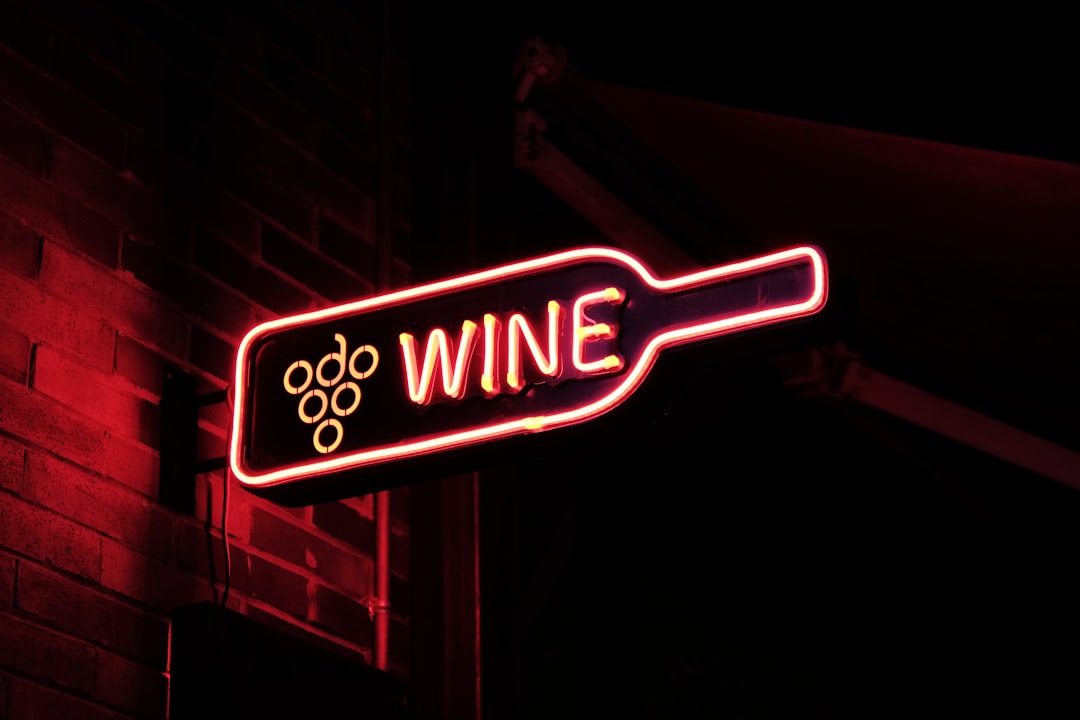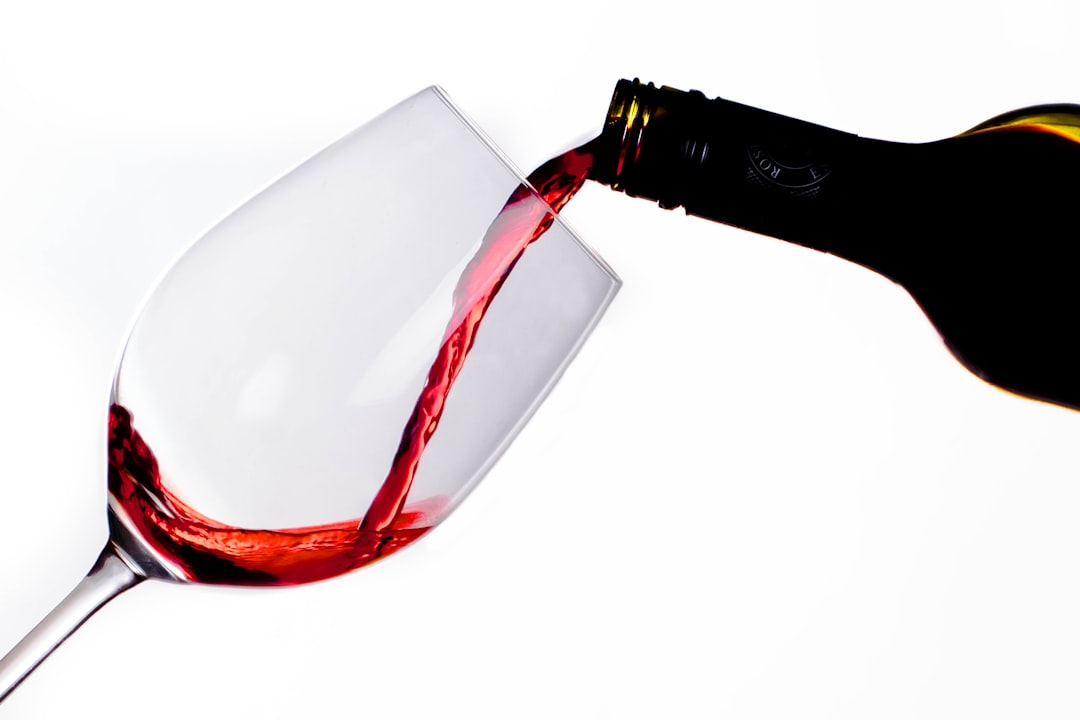

Engage prospects with a scan and streamline customer engagement with FREE QR code marketing tools by Sona – no strings attached!
Create a Free QR CodeFree consultation

No commitment

Engage prospects with a scan and streamline customer engagement with FREE QR code marketing tools by Sona – no strings attached!
Create a Free QR CodeFree consultation

No commitment
QR codes have become a strategic tool in bridging offline engagement with online action. For wine brokerage services businesses, they are more than a convenience: they offer a way to overcome common frustrations such as missing high-value prospects who research discreetly, as well as gaps in data collection that lead to lost opportunities.
Wine brokers and marketers frequently struggle to ensure wine inventory is both visible and trustworthy, and that it is effectively tracked through each touchpoint. Issues like discarded paper flyers or bottles lacking a traceable digital presence can leave high-intent prospects unnoticed. As customer demand for transparency and regulatory compliance grows, these missed signals represent real revenue at risk.
Integrating QR codes into product packaging and marketing collateral unlocks interactive touchpoints, creating moment-by-moment chances to track interest, educate customers, and import buyer actions directly into CRM and analytics platforms. This framework shows how QR technology, combined with advanced data practices, empowers wine business leaders to transform once-anonymous engagement into measurable outcomes, closing the gap between offline contact and digital follow-through.

QR codes bridge the gap between physical touchpoints and digital outcomes, which is crucial when many prospective buyers browse portfolios or inspect bottles without ever filling out a form or leaving a visible trail. Investment-minded collectors and trade partners often research quietly, and without a way to capture those signals, high-value leads can slip through the cracks.
To increase packaging engagement, think of every bottle, tag, shipper, and insert as a scanable entry point into a curated digital journey. Replace analog dead ends like static brochures and printed tasting notes with dynamic, personalized content that evolves as your offers and allocations change. When QR codes point to structured destinations such as provenance dashboards, updated allocations, or compliance documents, you reduce friction and improve trust in a single action.
Here’s how to improve engagement:
This approach replaces legacy processes based on paper forms, unmeasurable print campaigns, and untargeted follow-up. It creates dynamic digital journeys that reflect actual buyer behavior, from initial discovery to authenticated purchase and post-sale loyalty. Platforms like Sona QR support every stage, from creating dynamic codes to connecting scan events with your CRM and analytics tools.

Persistent problems like untracked high-interest buyers, incomplete lead data, and inconsistent messaging across customer touchpoints undermine revenue. Valuable leads are frequently lost because they remain anonymous or disengaged by static materials. The bottle leaves the tasting, the shipper lands at a collector’s cellar, and the signal disappears.
QR codes address these challenges by connecting physical assets with digital intelligence. Dynamic content lets marketers update wine notes, vintage information, or compliance details after labels are printed, which is essential when allocations shift or regulations vary by region. Engagement analytics reveal which varietals, producers, or placements influence purchase intent, and which channels generate repeat scans that correlate with readiness to buy. See QR codes for wine bottles.
In practice, QR codes guide VIPs from tasting invitations to RSVP confirmation and allocation requests, route shipments to instant verification and storage instructions, and connect in-store displays to educational content that reduces buyer hesitation. Real-time data on depth of engagement helps brokerages identify who is leaning in and which follow-up should come next: a sommelier consult, a provenance deep dive, or a hold for a pending allocation.

Selecting the right QR format ensures your campaign aligns with the buyer’s context and your business goals. Wine brokerages benefit from formats that simplify contact exchange, accelerate authentication, and remove friction from registration and allocation requests.
For brokerage scenarios, dynamic web links, forms, and certificate verification are the high-impact formats. They support authentication and transparency, enable data capture at the moment of interest, and keep content accurate as inventory and regulations change.

Wine brokerages operate at the intersection of physical products and digital outreach. The best QR placements meet the buyer where curiosity peaks, then hand off to a digital experience that informs, reassures, and converts. Missed opportunities often occur when scanning contexts are ignored or when calls to action are vague.
Think through the lifecycle of your client’s interactions: bottle discovery, tasting attendance, shipment receipt, and post-sale engagement. At each stage, QR codes can enhance value while recording buyer intent. When patterns emerge, such as high scan rates on specific producers or placements, you can shift budget to the winners and refine underperforming placements with new messaging or destinations.

QR codes shine when they solve tangible brokerage problems: authenticating rare bottles, converting interest at tastings, and gathering clean data without friction. As regulations evolve and inventory moves quickly, dynamic, measurable links keep your brand responsive and credible.
Use these high-impact scenarios to capture value where it is often lost:
Each use case deepens the touchpoint while adding structured data to segment and personalize future engagement. You replace anonymous curiosity with qualified interest that your team can track and serve.
Every scan is a data signal. When you deploy QR codes across packaging, events, direct mail, and shipments, you can infer buyer intent, preferred channels, and timing. Wine brokerage services benefit from segmenting audiences by collectors vs. trade buyers, domestic vs. international shipping needs, and verification-first vs. content-first scanners.
Sophisticated retargeting begins by designing your QR footprint to mirror the buyer journey. Awareness codes on event signage should lead to tasting content and RSVP flows. Consideration codes on bottle tags should lead to provenance and allocation details. Conversion codes on invoices or follow-up mailers should lead to secure payment or re-order prompts. Each scan becomes both a service to the buyer and a behavioral tag for your team. For tactics, see Sona Playbook: intent-driven retargeting.
Disconnected campaigns reduce clarity and waste spend. QR codes act as connectors, bringing coherence to offline and digital engagement. When each physical touchpoint is tied to a digital destination and a data pipeline, you create a system that listens, adapts, and performs. Learn more about offline attribution.
For wine brokerages, multi-channel integration is especially valuable because buying committees, collectors, and trade partners engage in different places and at different times. A collector may discover a producer at a tasting, perform a provenance check at home, and complete an allocation request after a broker call. QR codes make each step measurable and easy to advance.
Centralized management through platforms like Sona QR helps you create, manage, and measure codes across channels, then sync scan data to your CRM and ad platforms so insights move with the buyer.
A disciplined process ensures that QR deployments are not only engaging but also attributable to revenue outcomes. The following steps map strategy to execution so your team can move from idea to impact with confidence.
Start by picking a single high-value outcome. For packaging, a common goal is bottle authentication to meet regulatory requirements this quarter and to capture verification scans as a new lead source. For events, your goal could be increasing RSVP confirmations and post-event allocation requests.
Align the use case with a precise success metric such as a target scan rate per 1,000 bottles shipped, a specific RSVP conversion rate for tastings, or a target number of allocation interest forms from VIP mailers. Clarity about the outcome shapes the content, placement, and measurement plan. See Sona’s blog post revenue attribution for aligning goals with measurement.
Select dynamic QR codes for campaigns that require updates, tracking, and retargeting flexibility. Use static codes only for evergreen destinations like a general contact page, and reserve dynamic codes for provenance dashboards, allocation flows, and compliance documentation that may change.
Choose destinations that match intent. For bottle tags, route to a provenance dashboard with a clear verify now prompt. For direct mail, route to curated selections with personalized recommendations. For event kits, route to RSVP confirmation and calendar adds.
Design QR codes that harmonize with your brand and materials. Include a logo in the center, use brand colors with sufficient contrast, and place the code within a visual frame that calls attention. Always pair the code with a specific, benefit-driven call to action such as Scan to check authenticity or Scan to request allocation.
Test across real conditions. Scan with multiple devices, at different angles, in low and bright lighting, and on the actual materials: coated labels, textured tags, matte cartons, and glossy brochures. Verify that the destination is mobile optimized and that analytics are firing correctly with UTM parameters and event tracking.
Prioritize placements that coincide with meaningful buyer actions or bottlenecks. On packaging, use neck tags and back labels where hands and eyes already linger. For shipments, place codes on outer cartons and packing slips so scans happen the moment the buyer opens the box. For events, add codes to tasting menus, lanyards, and table tents.
Match placement to audience and context. Trade buyers at a portfolio tasting want quick access to technical sheets and pricing, while collectors opening a case at home want authenticity verification and storage advice. For direct mail, personalize codes by recipient and reference the buyer’s preferred regions or producers in the landing page headline.
Set up analytics before launch. Use a platform like Sona QR to monitor scans by time, device, location, and source placement. Connect to your CRM so scan events enrich contact records, trigger workflows, and feed lead scoring. Establish dashboards for the metrics that matter most: scan rate, conversion rate, time to form completion, and repeat scan frequency.
After launch, analyze funnel drop-offs and run A/B tests on calls to action, landing page copy, and placements. Reassign budget to placements with the highest scan-to-conversion ratio and revise underperformers with sharper messaging or new destinations. Keep a change log so you can correlate lift with specific optimizations.
Start creating QR codes for free
One major issue for brokerage teams is the lack of insight into what actually drives revenue. Scans without context are partially helpful, but without clear attribution to leads, opportunities, and closed deals, it is difficult to double down on what works. If high-value prospects remain outside your CRM, spend will be misallocated and follow-up will be mis-timed.
Effective tracking requires a full-funnel approach. Start by capturing scan metadata, then attach it to identifiable contacts and opportunities whenever possible. Use consistent UTM parameters on every destination link. When a scan triggers a form fill, pre-fill fields to reduce friction and map submissions to existing CRM records to prevent duplicates. The result is a single thread of attribution from label to ledger.
Platforms like Sona QR and Sona simplify the mechanics. Sona QR captures the details of every scan and syncs them to your CRM. Sona.com extends that data into attribution and buyer journey analytics so you can connect offline scans to pipeline creation and revenue influence, rather than stopping at engagement metrics.
Scaling success requires focusing on placements and workflows that reflect how collectors and trade partners actually behave. The more your QR strategy mirrors buyer intent, the higher your scan-to-conversion rates and the stronger your attribution story.
Educate your team and your clients about the value that scanning unlocks. A clear promise beside each code, reinforced by staff at tastings or on broker calls, can double scan rates. Automate follow-up so that every scan results in a timely, relevant next step without relying on manual effort.
Creative deployment ideas tailored to wine brokerage services include VIP metal tags on limited-release bottles with a scan-to-request-allocation flow, as well as QR stickers on insulated shipper lids that open to a storage temperature calculator and a single-tap request for cellar consultation.
Wine brokerage services operate in a setting where missed signals and anonymous research often result in lost revenue. QR technology transforms every physical interaction into a measurable, actionable touchpoint: from tastings and direct mail to back labels and shipper boxes. The same scan that delivers provenance verification can also add a high-intent contact to your CRM and trigger a personalized follow-up that shortens time to purchase.
Firms that embrace QR codes gain a durable competitive advantage. They turn static materials into responsive media, connect offline interest to digital journeys, and build a data foundation that improves decision making. With a disciplined approach to use cases, placements, tracking, and optimization, you can attract, nurture, and convert high-value clients more effectively while strengthening compliance and trust. Platforms like Sona QR make it straightforward to start small, measure what matters, and scale the practices that consistently move the needle. Explore Sona QR’s use case library.
QR codes have revolutionized wine brokerage services by transforming traditional packaging into interactive, data-driven engagement tools. They enable brokers to showcase detailed wine provenance, tasting notes, and exclusive offers directly to consumers, enhancing transparency and trust while driving customer acquisition and loyalty. Imagine instantly knowing which bottles spark the most interest and having the agility to update content without reprinting labels.
With Sona QR, you can create dynamic, trackable QR codes tailored for wine packaging in seconds, allowing real-time campaign updates and linking every scan to measurable outcomes. This means no missed opportunities to connect with buyers or showcase your portfolio’s unique value. Start for free with Sona QR today and turn every bottle into a powerful conversation starter and a catalyst for closing deals.
QR codes connect physical wine assets with digital intelligence, enabling provenance verification, dynamic content updates, buyer behavior tracking, and improved lead capture to boost trust and revenue.
They can replace static inserts with dynamic content, optimize QR code placement with clear calls to action, monitor scan analytics, and create personalized digital journeys that reflect buyer behavior.
Best practices include using dynamic QR codes for updatable provenance and compliance info, placing codes on bottles and shipping materials, tracking scan data in CRM systems, and automating documentation and follow-up.
Digital marketing leverages QR codes on event materials to register attendance, provide digital tasting sheets, enable appointment scheduling, and facilitate personalized follow-ups that increase RSVP rates and allocation requests.
Innovative uses include linking to provenance dashboards, market insights, compliance documents, augmented reality experiences, video content, and direct allocation requests to engage collectors and trade partners.
Use Sona QR's trackable codes to improve customer acquisition and engagement today.
Create Your FREE Trackable QR Code in SecondsJoin results-focused teams combining Sona Platform automation with advanced Google Ads strategies to scale lead generation

Connect your existing CRM

Free Account Enrichment

No setup fees
No commitment required

Free consultation

Get a custom Google Ads roadmap for your business






Launch campaigns that generate qualified leads in 30 days or less.
